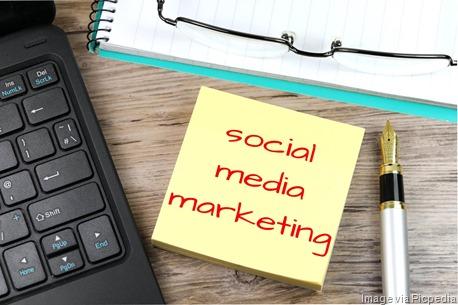 Isn’t it frustrating to think you finally understand something in business, like marketing with social media, only to realize that the landscape changed while you were looking at other priorities? For example, it used to be that marketing via social media meant banner ads on Facebook, buying search engine results, and sponsoring blog entries, but these don’t suffice anymore.
Isn’t it frustrating to think you finally understand something in business, like marketing with social media, only to realize that the landscape changed while you were looking at other priorities? For example, it used to be that marketing via social media meant banner ads on Facebook, buying search engine results, and sponsoring blog entries, but these don’t suffice anymore.
In a classic book on social media by Jim Tobin, “Earn It. Don’t Buy It,” he asserts that “earned” social engagement drives better business results than paid social exposure. Jim should know, since he is the president of Ignite Social Media, one of the best known social media marketing agencies. Here are a few bits of wisdom from both of us along these lines:
- Nobody clicks on Facebook banner ads anymore. Banner ads routinely average a .1% click through rate and Facebook manages to be about half as good as that. That’s 99.96% of people not clicking on those ads. When the glass is only .04% full, you should start looking for a new container.
- Where are the young social media users going? They are going to Instagram, TikTok, WhatsApp, and Snapchat. TikTok is currently the fastest growing social network, while Instagram is close behind with a bigger share globally of new sign-ups.
- You need influencers more than advocates. Brands need influencers working on their behalf because they provide the third-party credibility and social proof that validates their products. 92% of people trust “recommendations from people I know” and 70% trust “consumer opinions posted online.”
- Where did your friends go? While Pinterest and Tumbler have seen activity increases approaching 100%, The Verge reports that Facebook usage has declined in the U.S. by 15 million users since 2017, as young people ages 12 to 17 migrate to Snapchat and Instagram.
- Maybe they just don’t care. As far back as 2013, Pew Internet & American Life Project started reporting that their focus groups found “waning enthusiasm for Facebook” among teens, that Facebook has become a “social burden” for them, and that “users of sites other than Facebook express greater enthusiasm for their choice.”
- New can turn old very quickly. Friendster was a fad, Second Life was a fad, MySpace was a fad, and Facebook suddenly seems old school. Don’t connect the latest platform, which may be transient, with the larger phenomenon of digitally enabled social conversations. If you can figure out why people care about your product, you’ll have success regardless of the platform du jour.
Earning social media clout for your business, rather than buying it, seems to be all about engagement. Engagement occurs when customers and stakeholders become participants by sharing ideas with you, or talking to their friends about you, rather than merely viewing what you publish. Each participant becomes part of your marketing department, as other customers read their output, and become part of the conversation. It’s the principle underlying “viral marketing.”
So how do you facilitate engagement and conversation with your solution? According to an explanation I first saw on Social Fresh, it’s really a cycle consisting of three key phases:
- User to product (engaged user base). This part isn’t new. In order to build any following, you need a solution that solves a real problem, not just technology that wows you, or great functionality with a painful learning curve. How engaged people are will depend on how much value they see, and how much they enjoy using the product.
- User to brand (engaged audience). Once someone is engaged with your product, you’ll want to get them engaged with your brand. This happens today when you talk to people through social media and responsive customer service. Get in the habit of having genuine conversations with your engaged users to create an engaged audience.
- User to user (engaged community). Now you have an engaged audience of people who feel an emotional connect with your brand and product. Time to start connecting them with each other. You can do so using conversation platforms like forums, Facebook groups or build something yourself.

